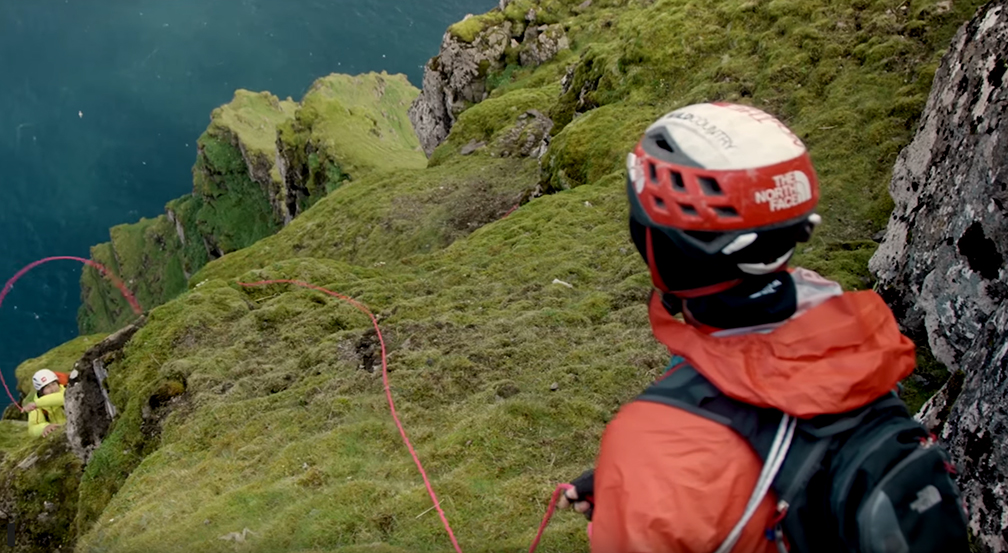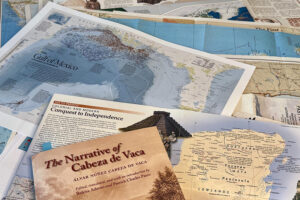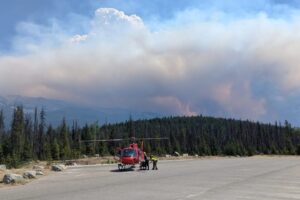It’s a land with fewer than 50,000 people. Governed by Denmark and located halfway between Iceland and Scotland. The Faroe Islands are part mystery, part prehistoric lifestyle.
Here, the annual hunt for baby fulmars has local fisherman scooping birds from the ocean, ripping their heads off with their bare hands and eating them. There’s a careful precision to the grisly pastime, since it’s only available during the one week in which the young birds are too fat to fly. During this time, they bob around in the ocean until they lose enough weight to take off.

Decapitating birds is one of the many unusual practices in the Faroe Islands. Photo: vice.com
Then there’s the weird extent to which locals go to give their sheep the very best grazing. In this documentary, a small group of Faroeans scale a 60m cliff, then wrench sheep up the cliff face one by one to a grassy edge.

A desirable pasture on top. But how do you get your sheep up there?
In total area, the 18 Faroe Islands are 6,500 times smaller than the U.S.A. and the population is 28,000 times smaller than China. Yet its lack of modern farming and simple bird-catching techniques are counterbalanced by its excellent infrastructure, first-class telecommunications — including high-speed internet — and high-quality website (thanks to faroeislands.fo for providing much of background to this story).
With a name that translates as “sheep islands” and whose main industry is fishing, one might wonder what a North Face expedition is doing there?

Wright and Hirayama are two of The North Face climbers who explored the Faroe Islands.
Well, a largely unknown country with a low population and the sort of cliffs that sheep get roped up can also challenge human climbers. And so James Pearson, Cedar Wright and Yuyi Hirayama come to check out the possibilities.
Initially, the team has its sights on scaling Enniberg, a 754m cliff on the island of Viooy, at the northernmost point of the Faroe Islands. But plans change when word of the expedition spreads around the island, and the farmer who owns the land Enniberg sits on puts a swift stop to the project by contacting the local police.
No biggy, though; mountainous capes, cliff faces and climbing routes riddle the Faroes. The problem with rock climbing here is less about selecting where to go, and more about overcoming the nuisances that come with this particular place. Falling rocks come with the territory, of course, but vomiting birds, not so much. The Faroe Islands attract many usual bird species, and one particular bird likes to vomit on potential prey. Unfortunately for the birds, rock climbers can hardly be considered prey.

Grassy climbing can be hideous: What can you grasp? Where do you put protection?
It’s nine pm when the team finally begins to tackle its chosen route. It turns out that their four-hour target for completion is far too optimistic: They spend the first two hours just on the first pitch. The climb continues well into the night.
Nine hours in, and it’s raining. They’ve completed nine pitches. They’re on Enniberg now but are not sure how they traversed there, and are concerned about angry farmers and local police. Meanwhile, the bird vomit continues to hail down.
Most of the top section is a grassy wall with very little exposed rock. Wright admits that he “grossly underestimated” how bad this could be. But in the end, the beauty of the Faroes outweighs even this “vegetation wall from hell” and the most heinous bird vomit.






